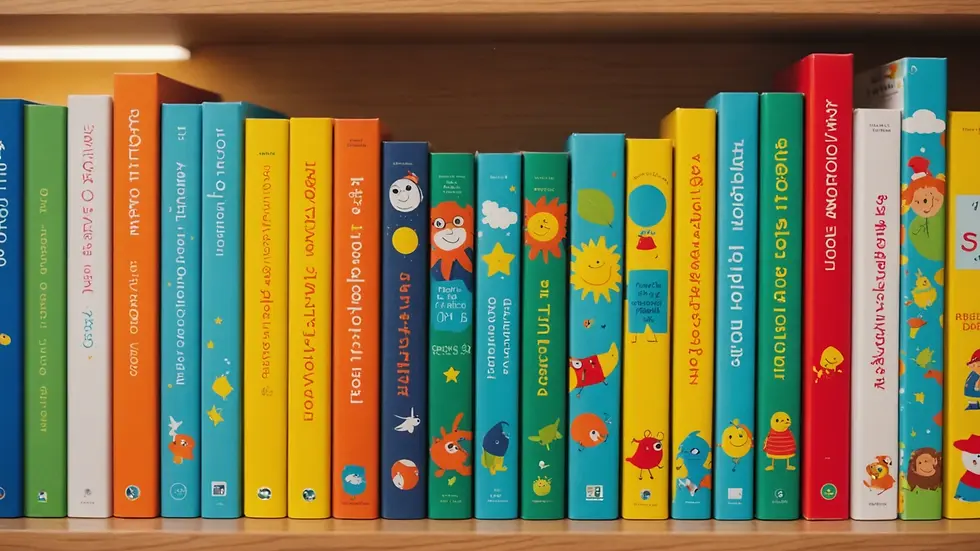Hey, How's It Going? Why Regular Check-Ins Matter for Grieving Kids (And How You Can Help)
- Mariah Caldwell

- Mar 7
- 4 min read
The loss of a loved one is overwhelming, especially for children. Young minds often struggle with complex emotions that can feel confusing and scary. Caregivers—parents, teachers, or friends—play a crucial role in supporting these children as they navigate their grief. Regular check-ins can significantly help grieving kids find stability and comfort in their emotional journey.
In this post, we’ll explore the importance of regular check-ins for bereaved children and offer ways to provide effective support, both at school and at home.
Understanding Grief in Children
When a loved one dies, children face a mix of emotions: sadness, confusion, anger, and even guilt. Research shows that children’s understanding of death typically develops in stages, and how they express their grief can vary widely. For example, a recent study indicated that about 20% of grieving children display signs of significant distress a year after the death.
Regular check-ins create opportunities for children to vocalize their feelings, allowing caregivers to recognize any concerns that might require further attention.
Creating a Safe Space for Expression
Building a trusting relationship with a grieving child is essential. During check-ins, ask open-ended questions that encourage sharing, such as "What have you been thinking about recently?" or "What feels hard for you right now?" These conversational approaches make discussions less intimidating and promote meaningful exchanges.
A safe environment shows children that their feelings are important and that they are not alone in their grief. For instance, if a child shares they miss their late parent, validating that feeling reassures them it’s normal to feel that way.
Signs That a Child Might Need Extra Support
While children express grief uniquely, certain signs may indicate that a child requires more help. Here are a few red flags:
Changes in Behavior: Increased anger or irritability, withdrawal from friends, or dropping grades can all signal distress.
Sleep and Appetite Changes: Noticeable shifts, such as difficulty sleeping or loss of appetite, may indicate emotional challenges.
Monitoring these signs through regular check-ins gives caregivers a greater chance to intervene when needed, creating a positive impact on the child's coping journey.
The Role of Routine in Healing
For children, a sense of routine can foster comfort and predictability during difficult times. Regular check-ins, especially around school or daily activities, help reinforce stability. For instance, a study found that children thrive on predictability, which can enhance their emotional resilience after a loss.
Discussing their daily life within the context of a routine teaches them that despite their loss, some aspects of life remain consistent. This reassuring presence can be a lifeline for grieving kids.
Practical Ways to Check In
To make your check-ins more effective and meaningful, here are a few practical suggestions:
Casual Conversations: Approach check-ins as informal chats. You could ask about their day during snack time or while taking a walk. This relaxed environment helps kids open up without feeling pressured.
Encourage Creative Expression: Suggest that they express their feelings through drawing, writing, or play. If they share their creations during your check-in, it may spark deeper conversations about their emotions.
Be Consistent: Make check-ins a regular activity, perhaps weekly at a set time. This predictability provides comfort, reassuring them that they can count on you.
Share Activities: Sometimes merely being present speaks volumes. Sitting next to them while watching a movie or doing something they enjoy can strengthen bonds and build trust.

Supporting Grieving Children at School
Educators have a powerful impact on grieving children's lives. To tailor support effectively, regular check-ins in the classroom should be personalized to meet each child's needs. Teachers can:
Morning Meetings: Use these as emotional touchpoints for students, allowing them to share feelings in a supportive setting.
Expressive Sharing Time: Create opportunities for children to voice their emotions during designated sharing circles, cultivating a sense of community.
Collaborate with Counselors: Work alongside school counselors to better support children who may need additional care, ensuring they feel both seen and understood.
Such nurturing environments allow children to manage their grief in healthier ways, which is crucial for their development.
Collaborating with Parents and Caregivers
Strong communication between teachers and parents is vital. Regularly checking in with a child’s parents helps you understand their overall well-being at home and how they're coping. By sharing observations about the child’s behavior in school, you provide parents with a clearer picture, paving the way for a cohesive support network.
Closing Thoughts
Validating a grieving child's feelings is crucial for their emotional health. Regular check-ins not only provide children with a dependable support system but also encourage open conversations about their grief. By fostering environments where they can freely express their emotions, you empower them to heal, assuring them that they are not alone.
Whether you're a parent, teacher, or caregiver, your role is vital. Let’s prioritize those meaningful questions, like “Hey, how’s it going?”—and be the steady anchor these children need as they navigate the turbulent waters of grief.




Comments